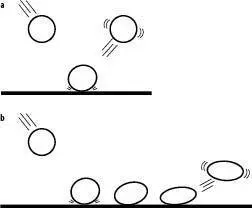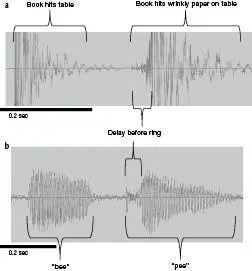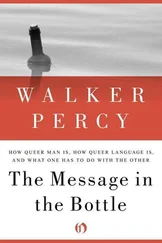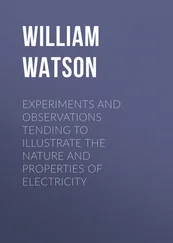Mark Changizi - Harnessed - How Language and Music Mimicked Nature and Transformed Ape to Man
Здесь есть возможность читать онлайн «Mark Changizi - Harnessed - How Language and Music Mimicked Nature and Transformed Ape to Man» весь текст электронной книги совершенно бесплатно (целиком полную версию без сокращений). В некоторых случаях можно слушать аудио, скачать через торрент в формате fb2 и присутствует краткое содержание. Год выпуска: 2011, Издательство: Perseus Books Group, Жанр: Старинная литература, на английском языке. Описание произведения, (предисловие) а так же отзывы посетителей доступны на портале библиотеки ЛибКат.
- Название:Harnessed: How Language and Music Mimicked Nature and Transformed Ape to Man
- Автор:
- Издательство:Perseus Books Group
- Жанр:
- Год:2011
- ISBN:нет данных
- Рейтинг книги:5 / 5. Голосов: 1
-
Избранное:Добавить в избранное
- Отзывы:
-
Ваша оценка:
- 100
- 1
- 2
- 3
- 4
- 5
Harnessed: How Language and Music Mimicked Nature and Transformed Ape to Man: краткое содержание, описание и аннотация
Предлагаем к чтению аннотацию, описание, краткое содержание или предисловие (зависит от того, что написал сам автор книги «Harnessed: How Language and Music Mimicked Nature and Transformed Ape to Man»). Если вы не нашли необходимую информацию о книге — напишите в комментариях, мы постараемся отыскать её.
Harnessed: How Language and Music Mimicked Nature and Transformed Ape to Man — читать онлайн бесплатно полную книгу (весь текст) целиком
Ниже представлен текст книги, разбитый по страницам. Система сохранения места последней прочитанной страницы, позволяет с удобством читать онлайн бесплатно книгу «Harnessed: How Language and Music Mimicked Nature and Transformed Ape to Man», без необходимости каждый раз заново искать на чём Вы остановились. Поставьте закладку, и сможете в любой момент перейти на страницу, на которой закончили чтение.
Интервал:
Закладка:
For several converging reasons, then, the ringing that occurs after a hit doesn’t tend to begin until the compressions and decompressions are over. For the basketball, the ringing occurs most vigorously when the ball rebounds back into the air. There is a simple lesson from these super slow motion observations: there is often a gap between the time of the start of a collision and the start of the ringing .
What determines the length of these hit-to-ring gaps? When your basketball is blown up fully, and the ground is firm, then the time duration of the contact with the floor is very short, and so the gap between the start of the hit and the ring is very small. However, when the ball is fairly flat—low in pressure—it spends more time interacting with the ground. Bouncing a ball on soft dirt would also lead to more ground time (see Figure 6). Figure 7a shows the sound waveform signal of a book falling onto a crumpled piece of paper—producing similar acoustics (in the relevant respects here) to those of a ball dropped on soft dirt—and one can see a hit-to-ring gap that is larger than that for the same book falling directly onto the table. For the flat basketball, then, the gap between hit and ring is larger than that for the properly blown-up ball.

Figure 6. (a)A rigid hit (i.e., involving rigid objects) rebounds—and rings—with little delay after the initial collision. (b)A nonrigid hit takes some time before rebounding and ringing. These physical distinctions are similar to the voiced and unvoiced plosives.
The key difference between the high-pressure ball and the flat ball—and the difference between the book falling on a solid desk versus crumpled paper—is that the former is more rigid than the latter. The more rigid the objects in a collision, the shorter the compression period, and the shorter the gap between the initial hit and the ring. The high-pressure ball is not only more rigid than the flat ball, but also more elastic. More elastic objects regain their original shape and kinetic energy after decompression, lose less energy to heat during compression, and tend to have shorter gaps. Also, if an object breaks, cracks, or fractures as it hits—a kind of nonrigidity and inelasticity—the gap is longer.
Therefore, although some hits ring with effectively no delay, other kinds of hits take their time before ringing. Hits can be hesitant, and the delay between hit and ring is highly informative because it tells us about the rigidities of the objects involved. Our auditory systems understand this information very well: they have been designed by evolution to possess mechanisms for sensing this gap and thus for perceiving the rigidity of the objects involved in events.
Because our auditory systems are evolutionarily primed to notice these hit-to-ring delays, we expect that languages should have come to harness this capability, so that plosives may be distinguished on the basis of such hit-to-ring delays. That is, we would expect that plosive phonemes will have as part of their identity a characteristic gap between the initial explosive sound and the subsequent sonorant. Language does, indeed, pay homage to the hit-ring gaps in nature, in the form of voiced and unvoiced plosives. Voiced plosives are like “b,” “g,” and “d,” and in these cases the sonorant sound following them occurs with negligible delay (Figure 7b, left). They even sound bouncy—“boing,” “bob,” and “bounce”—like a properly inflated basketball. Unvoiced plosives are like “p,” “k,” and “t,” and in these cases there is a significant delay after the plosive and before the sonorant sound begins, a delay called the voice onset time (Figure 7b, right). (Try saying “pa,” and listen for when your voice kicks in.) In English we have short voice onset times and long ones, corresponding to voiced and unvoiced plosives, respectively. Some other languages have plosives with voice onset times in between those found in English.

Figure 7. Illustration that voiced plosives are like rigid, elastic hits, and unvoiced plosives like nonrigid, inelastic hits. These plots show the amplitude of the sound on the y-axis, and time on the x-axis. (a)The sound made by a stiff hardcover book landing on my wooden desk on the left, followed by the sound of that same book landing on my desk, but where a wrinkly piece of paper cushioned the landing (making it less rigid and less elastic). (b)Me saying “bee” and “pee.” Notice that in the inelastic book-drop and the unvoiced plosive cases—i.e., the right in (a)and (b)—there is a delay after the initial collision before the ringing begins.
Not only do languages utilize a wide variety of voice onset times—hit-to-ring gaps—for plosive phonemes, but one does not find plosive phonemes that don’t care about the length of the gap. One could imagine that, just as the intensity of a spoken plosive doesn’t change the identity of the plosive, the voice onset time after a plosive might not matter to the identity of a plosive. But what we find is that it always does matter. And that’s because the intensity of a hit in nature is not informative about the objects involved, but the gap from hit to ring is informative (as is the timbre). That’s why the gap from hit to ring is harnessed in language. And that’s why, as we saw earlier, the distinct plosive sounds at the start and end of words are treated as the same, despite being acoustically more different than are voiced and unvoiced plosives (like “b” and “p”).
In light of the ecological meaning of voiced versus unvoiced plosives, consider the following two letters from a mystery language: ◆ and ✴. Each stands for a plosive, but one is voiced and the other unvoiced. Which is which? Most people guess that ◆ is voiced, and that ✴ is unvoiced. Why? My speculation is that it is because ◆ looks rigid, and would tend to be involved in hits that are voiced (i.e., a short gap from hit to ring), whereas ✴ looks more kinked, and thus would be likely to have a more complex collision, one that is unvoiced (i.e., a long gap between hit and ring). My “mystery language” is fictional, but could it be that more rigid-looking letters across real human writing systems have a tendency to be voiced, and more kinked-looking letters have a tendency to be unvoiced? It is typically assumed that the shapes of letters are completely arbitrary, and have no connection to the sounds of speech they stand for, but could it be that there are connections because objects with certain shapes tend to make certain sounds? This is the question Kyle McDonald—a graduate student at Rensselaer Polytechnic Institute (RPI) working with me—raised and set out to investigate. He found that letters having junctions with more contours emanating from them—i.e., the more kinked letters—have a greater probability of being unvoiced. For example, in English the three voiced plosives are “b,” “d,” and “g,” and their unvoiced counterparts are “p,” “t,” and “k.” Notice how the unvoiced letters—the “t” and “k,” in particular—have more complex structures than the voiced ones. Kyle McDonald’s data—currently unpublished—show that this is a weak but significant tendency across writing systems generally.
Rigid Muffler
As I walk along my upstairs hallway, I accidentally bump the hammer I’m carrying into the antique gong we have, for some inexplicable reason, hung outside the bedroom of our sleeping infant. I need to muffle it, quickly! I have one bare hand, and the other wielding the guilty hammer; what do I do? It’s obvious. I should use my bare hand, not the hammer, to muffle the gong. Whereas my hand will dampen out the gong ring quickly, the hammer couldn’t be worse as a dampener. My hand serves as a good gong-muffler because it is fleshy and nonrigid. My hand muffles the gong faster than the rigid hammer, yet recall from the previous section that nonrigid objects cause explosive hits with long hit-to-ring gaps. Nonrigid hits create rings with a delay, and yet diminish rings without delay. And, similarly, rigid hits create rings without delay, but are slow dampeners of rings.
Читать дальшеИнтервал:
Закладка:
Похожие книги на «Harnessed: How Language and Music Mimicked Nature and Transformed Ape to Man»
Представляем Вашему вниманию похожие книги на «Harnessed: How Language and Music Mimicked Nature and Transformed Ape to Man» списком для выбора. Мы отобрали схожую по названию и смыслу литературу в надежде предоставить читателям больше вариантов отыскать новые, интересные, ещё непрочитанные произведения.
Обсуждение, отзывы о книге «Harnessed: How Language and Music Mimicked Nature and Transformed Ape to Man» и просто собственные мнения читателей. Оставьте ваши комментарии, напишите, что Вы думаете о произведении, его смысле или главных героях. Укажите что конкретно понравилось, а что нет, и почему Вы так считаете.












